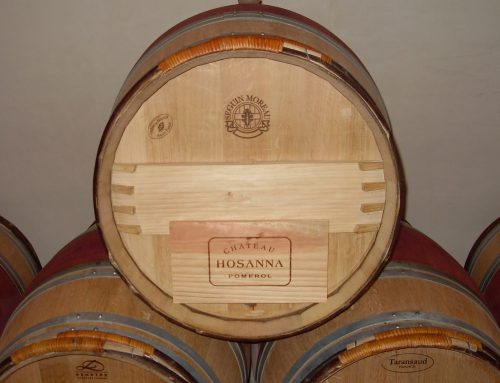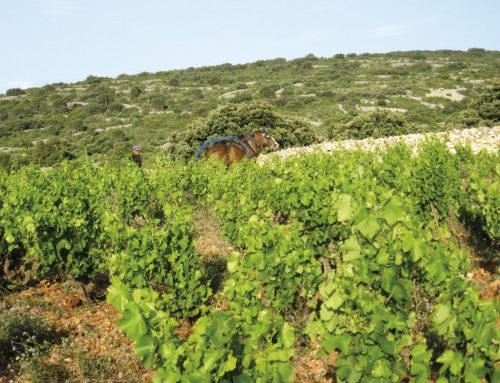Gregory Hecht and Francois Bannier are the new kids on the wine scene, and their wine’s best is found in a glass of the 2006 Cotes du Roussillon Villages.
In July, I met Hecht across a sidewalk table at Le Bar a Vins in Pezenas, a small town in France’s Languedoc region. I’m stretching the word “kids,” as Hecht is 38 years old, and Bannier is a year older.
In excellent English that Hecht perfected in his early 20s while studying at a New York business school and working at a London bank, he explained he “worked just long enough in business to decide it was better to go to the Dijon wine school for a degree.” It was there that he met Bannier; over the next decade each pursued different avenues in the wine trade until 2002 when they established Hecht & Bannier negociant wine business.
Until recently, the negociant concept was foreign to the Languedoc region. This wine area has been dominated by large cooperatives making bottom-shelf wine at best, and poorly made wine regularly. To this environment Hecht & Bannier brought the Burgundy negociant model: buying freshly fermented wine from various sources; aging, blending and bottling it under their own label; and bringing it to the market.
Wines come from three sources. Buyers taste at cooperatives to find the best lots to purchase before those barrels are blended into the generic cooperative wines; they visit individual growers to purchase quality wines; and top producers sell them wine because they want to help Hecht & Bannier enhance the reputation of the Languedoc.
At our sidewalk table, Hecht poured his 2006 Minervois and Faugeres wines. Three weeks ago, I retasted those, along with the 2006 Cotes du Roussillon Villages.
Perhaps it was the Languedoc air or the honesty of Gregory Hecht, but I liked the 2006 Faugeres more that night than in my glass in Hoboken a month later. Both times the 70-percent syrah and 30-percent mourvedre blend showed its dark purplish color and ripe blackberry profile, but from my bottle at home, I received a bigger, riper fruit, New World-style wine akin to California and Australia Syrah. I preferred the less aggressive and balanced 2006 Faugeres I had in Pezenas. Consumers who prefer a hardy-style Syrah will enjoy the 2006 Faugeres.
The 2006 Minervois had less variation: In both tastings there was a vegetal taste behind the appealing black cherry and black pepper aromas and flavors of this 80-percent syrah and 10-percent each carignan and grenache blend. I suspect it is from the carignan, but whatever the source, it detracts from the initial pleasing impression.
The 2006 Hecht & Bannier Cotes du Roussillon Villages was the most pleasing for my palate. A blend of 60-percent grenache with the remainder mourvedre, syrah and carignan, the wine has an eye-catching black cherry shade.
When first poured, smoked oak, cocoa, cedar and herbal aromas rise from the glass; its medium body carries black cherry and cocoa flavors with balanced tannins and a graceful texture. Thirty minutes of aeration diminishes the smoky aspect and allows a pleasant black fruit scent to join the mixture. Like humans, wines do better when breathing.
It’s not too soon to be thinking of fall dishes like roasted leg of lamb and sauteed duck breast. Both will benefit from a glass of the 2006 Hecht & Bannier Cotes du Roussillon Villages next to it.
The 2006 Cotes du Roussillon Villages retails for approximately $22; the 2006 Minervois, $18: and the 2006 Faugeres, $34.







Leave A Comment